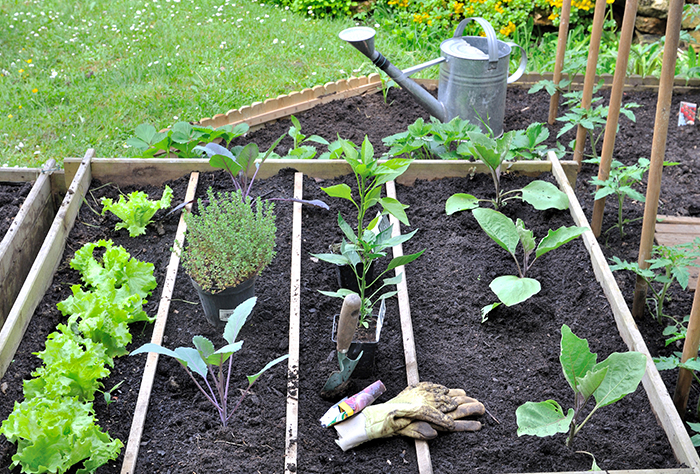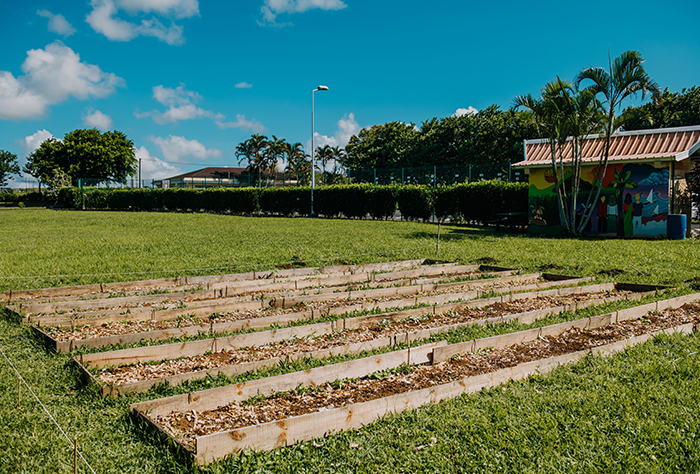Here’s an original idea to keep young and old alike entertained until lockdown is over. Anyone can grow their own “anti-crisis” vegetable garden. You only need some ready-to-eat vegetables to get started! Aurore Rouzzi tells us more on this topic.
Aurore gives us a word of caution prior to getting started: creating a vegetable garden at home now is obviously not going to provide us with a regular supply of tomatoes or potatoes within ten days! It is worth the effort however, as it can provide a small-scale production of vegetables, or aromatic herbs to flavour your dishes. You will also be pleased to reap the fruits of all our efforts! Here are some basic things to know before you set your hands to work.
- What results can you expect from what seeds?
To lay the foundations of your vegetable garden, start by checking out your kitchen to see what can be reused. Whether aromatic herbs, legumes or vegetable plants, first understand the needs of each plant to be able to grow it successfully!
- Seed germination
Seed germination is fun and brings quick results. It also allows you to start growing certain vegetables indoors. It doesn’t matter if you don’t have a seedbed at home: you can use a glass container and a cotton ball for a simple experiment. The SensiBio website provides a detailed methodology to guide you. You can also easily sprout legume seeds (lentils, chickpeas), which will create a verdant patch while adding healthy variety to your diet.

- Growing aromatic herbs
A very easy method to grow certain herbs such as mint and basil right in your kitchen is to put a seedling in a glass of water in a bright spot, but without direct light. After a few days, you will notice that it has started to develop roots! This method is not suitable for all aromatic herbs: thyme, parsley and coriander must be grown in the soil or in a pot.
- Using the heads to plant again from scratch!
Rather than throwing away the heads or roots of vegetables you’ve eaten, try placing them in a container filled with water and put it in a bright space. You will soon see a few leaves sprout! This is the case for carrots, onions, leeks or even lettuce, which will grow new leaves from that remaining part. If you don’t cut the leaves of your lettuce, you will even have the pleasure of harvesting viable seeds to put in the ground after a few months.
- Vegetables that provide seeds for replanting
Lettuce, pumpkin or okra seeds will allow you to grow ready-to-eat vegetables (with a good dose of patience!). After germinating the seeds, you can plant them into the ground. However, to avoid being disappointed, Aurore advises you to bear in mind that it will be harder for the seeds to germinate if the fruit was picked too green.

SensiBio’s tips before going further
If growing these first crops has made you want to extend the experience by creating a fully-fledged vegetable garden in your yard, here are a few tips to get you started.
Aurore explains that the season is perfect to grow a vegetable garden at home! If your seeds have already sprouted, take advantage of the fact that the rainy, hot season is over to get started.
Prior to planting, think about loosening the soil first: whether in your garden or in a pot, plant roots need aerated soil to grow. The reason is that good quality soil contains 50% air and is rich in nutrients. All you have to do is loosen the soil using a garden fork, for instance.
Finally, to sustain your vegetable garden, think about diversifying your crops: letting natural herbs grow will help recreate a true natural ecosystem that will keep snails and other unwanted pests away. In other words, you will form a small green lung within your garden!
If you like the idea of having your own anti-crisis vegetable garden, check out all the SensiBio videos to get started!
